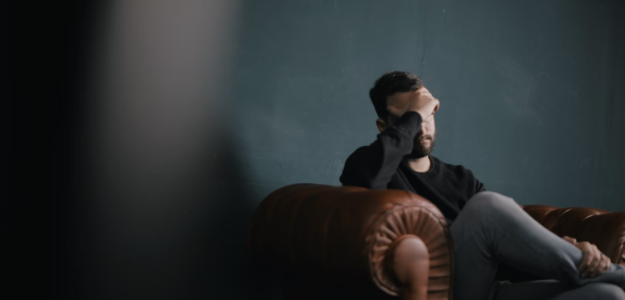They seem fine during the day, but sunset changes everything—know the reason
- Replies 0
For some families, evening isn’t the peaceful wind-down we expect—it’s when the storm begins.
As shadows stretch across the room, a loved one’s mood shifts. They grow agitated, disoriented, even scared.
This is sundowning, and it’s more common than you think.
As the day draws to a close, many families caring for elderly loved ones find themselves entering a different kind of twilight—one marked by anxiety, agitation, and confusion.
It’s a pattern known as sundowning, and while it's not a disease itself, it can deeply affect those living with dementia and those who care for them.
For caregivers, evenings can feel like walking into a storm. “Sundowning as a caregiver is difficult,” said Dezarae Stone, a patient care assistant in North Carolina.
She recalls the evenings caring for her grandmother: “At the end of the day, you're tired from working and caring for your loved one... but that's when my grandma had the highest level of confusion and needed the most.”

What followed were nights filled with soft reassurances, redirecting her grandmother to bed, and gentle reminders that it was the middle of the night.
Sundowning—also called sundowner’s syndrome—is the emergence or worsening of behavioral symptoms such as aggression, disorientation, or paranoia in the late afternoon or evening.
According to Frontiers in Medicine, it affects up to two-thirds of individuals with dementia and can be an indicator of disease progression.
The condition doesn’t stem from one single cause. Researchers believe it’s driven by a blend of biological changes in the brain, circadian rhythm disruption, medications, sleep disorders, or even environmental stressors like noise and unfamiliar routines.
Daily exhaustion, hunger, or physical pain can all contribute. Environments that are noisy, overstimulating, or poorly lit can aggravate symptoms.
Even senior care facilities—especially those with inconsistent schedules or limited staffing—can intensify confusion.
Dr. Gary Small from Hackensack University Medical Center explained how symptoms might show up differently: “Women are more likely to experience symptoms of depression, psychosis and delusion, while men are more likely to experience apathy.”
Sundowning is diagnosed mainly through observations made by caregivers.
Doctors will ask about mental health, medication history, and behaviors like hallucinations or wandering.
They’ll also work to rule out similar conditions such as delirium, Parkinson’s disease, or even infections like UTIs, which can cause sudden confusion.
The key difference? “Delirium usually has a faster onset and often goes away once the trigger is removed. Sundowning is a chronic issue and can be reduced with adjustments to routine and lifestyle, but it will not go away.”
While drugs like melatonin, risperidone, or trazodone are sometimes used in severe cases, experts recommend starting with non-pharmaceutical methods.
“The best initial treatment to sundowning is nonpharmacologic,” said Dr. Lisa Gibbs of UCI Health. That means tuning into what’s really going on—whether it’s pain, overstimulation, or unmet needs.
Simple changes can help. Reducing clutter, maintaining a calm evening environment, sticking to routines, or introducing light or music therapy may provide comfort.
Snacks, naps, soft lighting, and even a walk can serve as gentle distractions.
Peggy Misciagna, who has cared for her husband Tom through Alzheimer’s and now sundowning, has learned to adapt: “I just give him reassurance.
I tell him I wish there was something more I could do for you, but that's about all that you can do, is just give them reassurance.”
Misciagna and others have found success in daily rhythms and validation. “I'm right here. You're safe,” she tells Tom regularly. Physical touch, openness about care, and flexibility all help soften the effects of the evening confusion.
Sundowning may become a predictable part of each day, but with patience, understanding, and practical support, caregivers can navigate it with compassion—and even grace.
“I often hold on to those memories of tucking my grandma back into bed,” Stone reflected. “I still recall her eyes looking into mine, and a sideways smile letting me know she felt safe with me.”
Read next:

Have you or a loved one experienced sundowning? What has helped you through it? Share your story in the comments below—and help others facing the same twilight hour.
As shadows stretch across the room, a loved one’s mood shifts. They grow agitated, disoriented, even scared.
This is sundowning, and it’s more common than you think.
As the day draws to a close, many families caring for elderly loved ones find themselves entering a different kind of twilight—one marked by anxiety, agitation, and confusion.
It’s a pattern known as sundowning, and while it's not a disease itself, it can deeply affect those living with dementia and those who care for them.
For caregivers, evenings can feel like walking into a storm. “Sundowning as a caregiver is difficult,” said Dezarae Stone, a patient care assistant in North Carolina.
She recalls the evenings caring for her grandmother: “At the end of the day, you're tired from working and caring for your loved one... but that's when my grandma had the highest level of confusion and needed the most.”

They seem fine during the day, but sunset changes everything. Image source: Nik Shuliahin / Unsplash
What followed were nights filled with soft reassurances, redirecting her grandmother to bed, and gentle reminders that it was the middle of the night.
Sundowning—also called sundowner’s syndrome—is the emergence or worsening of behavioral symptoms such as aggression, disorientation, or paranoia in the late afternoon or evening.
According to Frontiers in Medicine, it affects up to two-thirds of individuals with dementia and can be an indicator of disease progression.
The condition doesn’t stem from one single cause. Researchers believe it’s driven by a blend of biological changes in the brain, circadian rhythm disruption, medications, sleep disorders, or even environmental stressors like noise and unfamiliar routines.
Daily exhaustion, hunger, or physical pain can all contribute. Environments that are noisy, overstimulating, or poorly lit can aggravate symptoms.
Even senior care facilities—especially those with inconsistent schedules or limited staffing—can intensify confusion.
Dr. Gary Small from Hackensack University Medical Center explained how symptoms might show up differently: “Women are more likely to experience symptoms of depression, psychosis and delusion, while men are more likely to experience apathy.”
Sundowning is diagnosed mainly through observations made by caregivers.
Doctors will ask about mental health, medication history, and behaviors like hallucinations or wandering.
They’ll also work to rule out similar conditions such as delirium, Parkinson’s disease, or even infections like UTIs, which can cause sudden confusion.
The key difference? “Delirium usually has a faster onset and often goes away once the trigger is removed. Sundowning is a chronic issue and can be reduced with adjustments to routine and lifestyle, but it will not go away.”
While drugs like melatonin, risperidone, or trazodone are sometimes used in severe cases, experts recommend starting with non-pharmaceutical methods.
“The best initial treatment to sundowning is nonpharmacologic,” said Dr. Lisa Gibbs of UCI Health. That means tuning into what’s really going on—whether it’s pain, overstimulation, or unmet needs.
Simple changes can help. Reducing clutter, maintaining a calm evening environment, sticking to routines, or introducing light or music therapy may provide comfort.
Snacks, naps, soft lighting, and even a walk can serve as gentle distractions.
Peggy Misciagna, who has cared for her husband Tom through Alzheimer’s and now sundowning, has learned to adapt: “I just give him reassurance.
I tell him I wish there was something more I could do for you, but that's about all that you can do, is just give them reassurance.”
Misciagna and others have found success in daily rhythms and validation. “I'm right here. You're safe,” she tells Tom regularly. Physical touch, openness about care, and flexibility all help soften the effects of the evening confusion.
Sundowning may become a predictable part of each day, but with patience, understanding, and practical support, caregivers can navigate it with compassion—and even grace.
“I often hold on to those memories of tucking my grandma back into bed,” Stone reflected. “I still recall her eyes looking into mine, and a sideways smile letting me know she felt safe with me.”
Read next:
- The truth about how weather affects our mental health—Here’s what experts have to say
- Stop confusing this with anxiety! Here's how to spot a deadly condition before it's too late
Key Takeaways
- Sundowning is a common and chronic symptom in dementia, marked by confusion and agitation late in the day.
- Nonmedical strategies like routines, lighting, comfort, and validation are often the most effective initial tools.
- Medication may help in certain cases—but should be approached cautiously with expert guidance.
- Support for caregivers is just as crucial as care for patients. Their calmness and reassurance can be the anchor in the storm.





